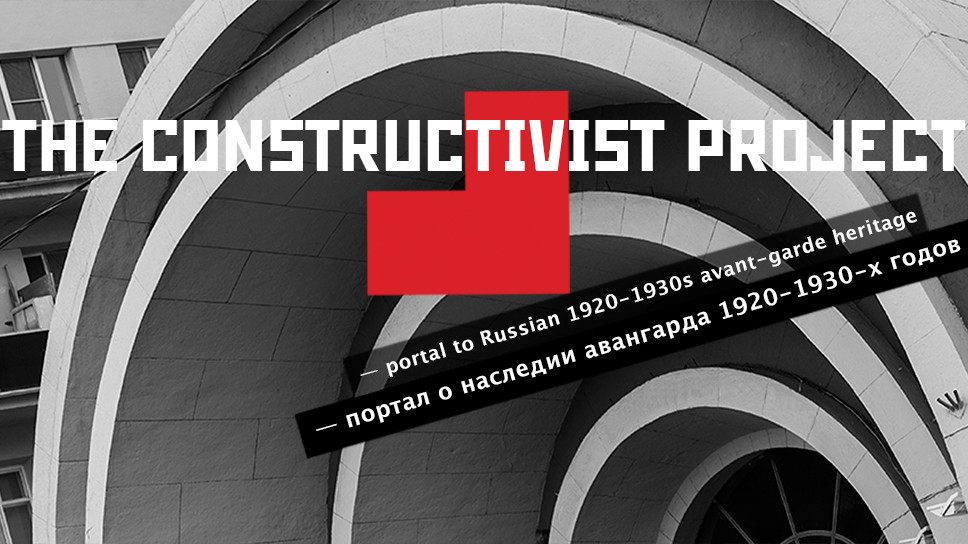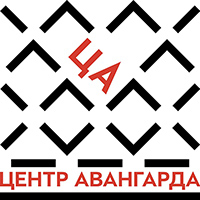
April 22 | 14:00 | Museum of Moscow
From the press release: Relaunch of The Constructivist Project website – portal to Russian 1920-1930s avant-garde heritage
On April 18, the International Day of Monuments and Sites, the updated website of The Constructivist Project will be relaunched. The project promotes the heritage of the avant-garde era and is run by photographer and researcher Natalia Melikova.
The project aims to draw the attention of both the Russian and international community to the fate of monuments of constructivist architecture. An extensive online resource has been created on the The Constructivist Project web portal which includes news, event announcements, an up-to-date database on constructivist monuments and their authors, books and publications.
A new prominent section of the website is a catalog of the architectural heritage of the avant-garde, which covers the 1920s-1930s and includes the territory of the former USSR: from Minsk to Vladivostok, Murmansk to Almaty. More than one thousand entries have already been added to the database, including separate buildings and complexes, as well as monuments and small architectural forms. The database contains buildings with and without a monument status, buildings that have survived until the present day and those that have been demolished. Among the goals of the project is to promote the preservation of architecture from this period and to disseminate information about them. The catalog of avant-garde architecture on The Constructivist Project platform is the first project of this scale devoted to the urban environment of the Soviet avant-garde era.
Over 30 volunteers and researchers from different parts of Russia and the CIS are working on compiling the database. The team has been put together by the Avant-Garde Center, the main partner of the project.
Natalia Dushkina, founding member of ICOMOS, International Council on Monuments and Sites of the twentieth century:
“This new project is beneficial in its informativeness and breadth. The multiplicity of criteria by which the heritage of the Russian avant-garde is assessed, typological diversity and the possibility of constant updating of the site's materials make the project of Natalia Melikova and the Avant-Garde Center interesting not only for the wider general public, but also for professionals involved in the study of the legacy of the twentieth century. This is a real research platform with its own documentary base.”
Marina Khrustaleva, architecture historian, coordinator of the Archnadzor social movement:
“The creation of a map of avant-garde monuments on the territory of the former Soviet Union open to the public is a very ambitious and extremely necessary project. The principle of crowdsourcing lies at the heart of its success: researchers from various cities can contribute verified information and current photographs, adding to the common cause.”
Jean-Louis Cohen, architect, historian, professor at New York University’s Institute of Fine Arts:
“At last, after years of rather impressionistic attempts at mapping the buildings erected in the early Soviet Union by modernist designers, which resulted recently in the publication of several books dealing with cities such as Ekaterinburg, Novosibirsk, Rostov, and Samara, a comprehensive information system has been conceived. It will become an exceptionally useful tool for the worldwide community of architects, scholars and students interested in the history and the current condition of avant-garde structures. Also, it will provide an open structure for the continuous introduction of information and materials developed within a growing number of research projects. With this initiative, the knowledge of a key chapter in the history of 20th century architecture in Russia reaches a new magnitude – and a welcome transparency.”
The presentation of the website will take place on April 22 at 14:00 at the Museum of Moscow, part of the “Days of the Avant-Garde” festival program.
Natalia Melikova – photographer, researcher and activist, was born in Moscow, and grew up in California. While getting her master's degree in photography at the Academy of Art University in San Francisco, she became fascinated by the ideas and architecture of constructivism. After graduation she returned to Moscow and continued her work on The Constructivist Project in order to popularize the heritage of the avant-garde in Russia and in the West. One of Natalia's works was taking part in the creation of the printed Constructivist Moscow Map published by Blue Crow Media (London).
Avant-Garde Center – educational and research center operating near the Shukhov Tower since 2014, in 2017 it merged with the Na Shabolovke Gallery. The center’s priorities are to protect constructivist architecture, to present the latest research, and to popularize the Soviet avant-garde as one of the central phenomenon in national culture.


Registration: timepad.ru